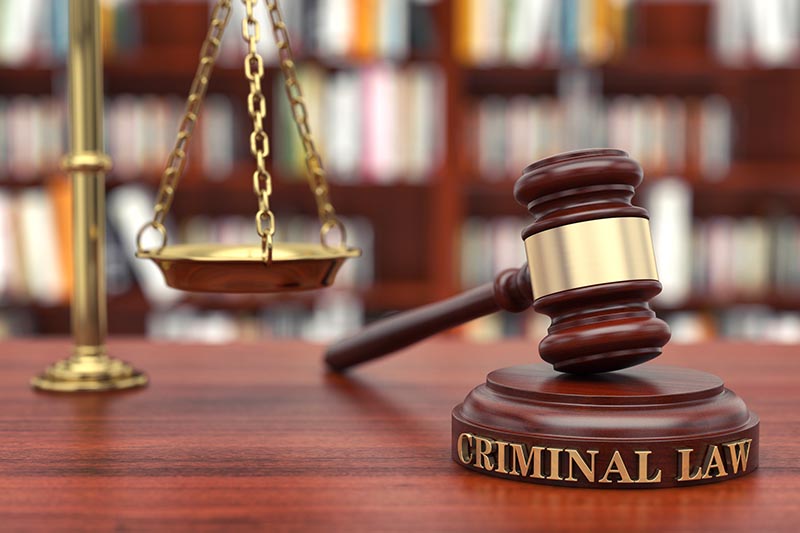Demystifying the Refine of Federal Appeals: What You Need to Know
Browsing the elaborate realm of federal appeals can typically look like traversing undiscovered waters for those unfamiliar with the procedure. Comprehending the subtleties of appellate court jurisdiction, the details of submitting a notification of charm, offering a compelling short, and making an influential dental disagreement are essential parts that can considerably affect the outcome of a situation. By untangling the layers of complexity surrounding government charms, individuals can gain a clearer insight right into the mechanisms that govern this vital phase of the legal system.
Recognizing Federal Appeals Process
Exploring the complex realm of the government appeals procedure unveils a methodical and structured journey through the judicial system - wyoming federal appeal lawyers. Federal allures work as a crucial device for evaluating decisions made by lower courts. Comprehending this procedure is essential for anyone associated with lawful procedures at the federal degree
The procedure commonly starts with an event disappointed with a reduced court's judgment submitting a notification of charm. This causes a review by a greater court, where a panel of judges assesses the lawful arguments presented by both celebrations. Briefs outlining the legal reasoning behind each party's position are submitted, and oral debates may be heard to clarify complicated problems.
The appellate court's decision is based on a thorough exam of the reduced court's procedures and the debates offered. As soon as the appellate court reaches a choice, it can verify, turn around, remand, or customize the lower court's ruling, offering quality and finality to the legal dispute.
Appellate Court Jurisdiction Explained

Appellate courts have jurisdiction over particular sorts of cases, normally those involving legal mistakes, procedural issues, or concerns of legislation instead of valid disagreements. The territory of appellate courts is usually described in laws and regulations that control the court system. Understanding appellate court territory is essential for parties included in the appeals process as it identifies whether an instance is eligible for testimonial and the extent to which the appellate court can intervene in the reduced court's decision.
Declaring a Notice of Appeal
The initial step in commencing the government charms process entails filing a Notice of Charm with the appropriate appellate court. wisconsin federal appeal attorneys. This important paper formally notifies the court and the other events included in the instance that the appealing event intends to look for a testimonial of the reduced court's decision. Submitting a Notice of Allure is a strict step-by-step requirement that sets the appellate process in motion
When preparing the Notification of Allure, it is necessary to guarantee conformity with the details rules and guidelines of the relevant appellate court. The document needs to typically consist of info such as the case name, the lower court's name, the date of the judgment being appealed, and a concise declaration suggesting the premises for the appeal.
Timeliness is important when filing a Notification of Charm. Missing out on the target date for sending this document can lead to the appeal being dismissed, highlighting the importance of accurate and prompt initiation of the allures procedure. It is a good idea to seek legal support to browse the intricacies of submitting a Notification of Allure properly.
Instruction and Oral Debate
In the appellate process, offering created briefs and taking part in oral debates play critical duties in promoting for the appealing party's placement before the appellate court. Briefs are thorough legal records that describe the parties' disagreements, legal authorities, and analysis supporting their positions. These composed submissions provide the court with a thorough understanding of the facts of the case, the pertinent law, and why the appealing party thinks the lower court's choice ought to be overturned.
Adhering to the submission and testimonial of the briefs, dental debates supply the events a chance to additional clarify their settings, attend to any questions the appellate judges might have, and emphasize bottom lines from their written briefs. Dental debates are a possibility for the attorneys to encourage the courts with verbal campaigning for and feedbacks to queries from the bench.

Getting the Appellate Court Decision

Conclusion
Understanding the appellate court jurisdiction, filing a notice of allure, preparing briefs, and presenting oral debates are all vital elements of this procedure. Ultimately, getting the appellate court choice can provide clearness and resolution to lawful disagreements.
As we progress from comprehending the government allures procedure to studying the intricacies of appellate court jurisdiction, a fundamental aspect comes to light concerning the authority and limitations of these higher courts in the legal landscape. Appellate court jurisdiction refers to the scope of cases that a specific appellate court has the power to choose and review upon. Unlike trial courts that listen to instances for the initial time, appellate courts are restricted to examining choices made by lower courts. Recognizing appellate court territory is vital for celebrations included in the appeals process as it determines whether an instance is qualified for evaluation and the degree to which the appellate court can intervene in the reduced court's choice.
Whether the appellate court verifies, reverses, or remands the lower court's decision, understanding the implications of the ruling is essential for all parties included in the appellate process.
Comments on “Why Select Federal Appeal Lawyers: Proven Techniques for Effective Appeals”